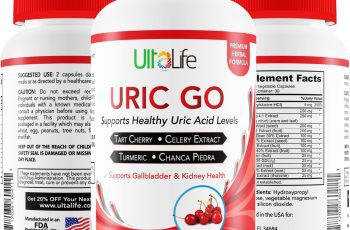
The internet is full of advice on happiness from people who don’t truly know what they’re talking about. You should not trust them.
Rather than finding your life advice on the other end of a Google search, you should be trusting neuroscientists that are constantly studying the brain and have learned exactly what will make you happy.
Alex Korb, UCLA neuroscience researcher, provided some insight as to what can increase happiness in your life. Here’s what you can learn from the people who truly know the answers:
-
The Most Important Questions To Ask When You’re Feeling Down
At times it may feel like your brain doesn’t want you to feel happiness, instead, you feel guilty or shameful.
Why?
Guilt and shame actually activate the brain’s reward center.
Though different, pride, guilt and shame activate similar neural circuits such as the amygdala, insula, nucleus accumbens, and the dorsomedial prefrontal cortex. Pride is the most powerful of these emotions and triggers the most activity in these regions, with the exception of the nucleus accumbens, which guilt and shame are more powerful here. It can be appealing to place guilt and shame on ourselves and this explains why these feelings are activating the reward center in the brain. This is the same for worrying, because temporarily, worrying makes your brain feel better as it’s giving you the illusion that you’re doing something about your problems.
Worrying actually helps calm the limbic system by decreasing activity in the amygdala and increasing activity in the medial prefrontal cortex. While this may seem counterintuitive, it shows that if you’re feeling anxiety, even worrying about it is better than doing nothing.
However, guilt and shame are terrible long-term solutions. So what do these neuroscientists believe you should do? Ask yourself this question:
What am I grateful for?
Gratitude is wonderful, but does it really affect your brain biologically? The answer is yes. Just like the antidepressant Wellbutrin, gratitude boosts the neurotransmitter dopamine.
Feeling grateful activates the brainstem region that produces dopamine, one of the many benefits of gratitude. In addition, gratitude towards others increases activity in social dopamine circuits, which create enjoyable social interactions.
Do you know what Prozac does? It boosts the neurotransmitter serotonin. Gratitude does this as well.
Boosting serotonin production is a powerful effect of gratitude. Thinking of the things you are grateful for forces you to focus on the positive aspects of your life. This increases serotonin production in the anterior cingulate cortex.
Yes, there are times that life punches you in the gut and it may feel like there’s nothing to be grateful for. However, this doesn’t matter because it’s the searching for something grateful that really counts.
Finding the gratitude is not what matters the most, it’s remembering to look in the first place. It is a form of emotional intelligence to remember to be grateful. A study actually found that gratitude affects neuron density in both the ventromedial and lateral prefrontal cortex. These changes in density suggest that the neurons in these areas become more efficient as emotional intelligence increases. With higher emotional intelligence, it takes less effort to feel gratitude. This doesn’t just make your brain happy, it can also create positive feedback in your relationships. It is important to express your gratitude to the people you care about.
So what happens when you are completely taken over with bad feelings? When you’re really down and you aren’t sure how to deal with it, there’s an easy answer…
-
Label Your Negative Feelings
Feeling awful? Give that awfulness a name. Anxious? Angry? Sad? It’s really that simple, put a label on that awful feeling. Sounds stupid? Your brain disagrees.
In one fMRI study titled “Putting Feelings into Words”, participants viewed pictures of people with emotional facial expressions. As they predicted, each participant’s amygdala activated to the emotions in the pictures. However, when they were asked to name the emotion, the ventrolateral prefrontal cortex activated and reduced the emotional amygdala reactivity. This meant that the participants’ impact was reduced by recognizing the emotions.
Suppressing emotions doesn’t help and will eventually backfire.
The study found that people who tried to suppress a negative emotional experience failed to succeed. While they thought they looked fine on the outside, inside their limbic system was just as aroused without suppression, and often even more aroused. Columbia scientist, Kevin Ochsner, repeated these findings using an fMRI. The conclusion was that trying to feel these feelings will not work and usually backfires, however, labeling does make a big difference.
A way to reduce this arousal is to use a few words to describe an emotion. Ultimately you should use symbolic language, which is using indirect metaphors, metrics, and simplifications of what you’re experiencing. This requires you to activate your prefrontal cortex, which lowers the arousal in the limbic system. The bottom line is, if you describe an emotion with a word or two, it helps reduce the emotion.
Ancient methods have been using this technique, as meditation has done this for centuries. Labeling emotions is a key tool for mindfulness.
Labeling affects the brain so powerfully, in fact, that it works with other people too. FBI hostage negotiators even use this as a primary tool.
Hopefully, you’re not reading this and labeling your emotional state as “bored”. Perhaps you’re not feeling awful but you most likely have things going on in your life that are causing you stress. The following is a simple way to beat it…
-
Make A Decision
Have you ever made a decision and then afterward your mind feels at ease? This is not a random occurrence. Scientific studies on the brain show that making decisions reduces worry, anxiety and helps you solve problems.
Decision making such as creating intentions and setting goals are part of the same neural circuit and engage the prefrontal cortex in a positive way, lowering worry and anxiety. Making decisions will also help you overcome striatum activity, which can cause you to have negative impulses and routines. Finally, making decisions changes your perception of the world, helping you find solutions to problems and calming the limbic system.
However, deciding can be hard. So what type of decisions should you make? Neuroscience has the answer…
Make a decision that is “good enough”. You shouldn’t stress about making the absolute best decision because being a perfectionist is stressful.
Trying to be perfect overwhelms the brain with emotions and gives you a feeling of being out of control.
If you try for the best instead of good enough, it brings too much emotional ventromedial prefrontal activity into the decision making process. On the contrary, recognizing that good enough is good enough activated more dorsolateral prefrontal areas. This will help you feel more in control. Barry Schwartz, a Swarthmore professor said “Good enough is almost always good enough.”
When you make a decision, your brain feels more in control. Feelings of control reduce stress. What is really fascinating is that deciding will also boost pleasure.
In the study, when participants actively made a decision, it caused changes in attention circuits and increased rewarding dopamine activity.
Need proof? Let’s talk about cocaine.
When 2 rats are given injections of cocaine, rat A had to pull a lever first, rat B didn’t have to do anything. The difference? Rat A gets a bigger boost of dopamine.
Both rats got the same injections of cocaine at the same time, but rat A had to actively press the lever, and rat B didn’t have to do anything. The result was that rat A released more dopamine in its nucleus accumbens.
The point is, when you set a goal, make a decision and achieve it, you feel better than when good things just happen by chance.
This answers the mystery of why dragging yourself to the gym can be so hard. If you go because you have to or should, it’s not a voluntary decision. Your brain doesn’t get the boost of pleasure, is just feels stress.
If you are forced to workout, you still don’t get the same benefits because, without the choice, the exercise itself causes stress.
It is important to make more decisions to increase happiness. Alex Korb, neuroscience researcher says, “we don’t just choose the things we like, we also like the things we choose.”
Being grateful, labeling negative emotions, and making more decisions are all great, but there’s something else you can do with others that neuroscience says is a path to much more happiness. Brain doctors say this…
-
Touch People
People need to feel love and acceptance from others. It’s painful when we don’t and not just awkward or disappointing, but actually painful.
There was a study done by neuroscientists where people played a ball-tossing video game, where players tossed the ball back and forth. There weren’t actually other players, just a person playing with a computer program. However, the people were told that the characters in the game were controlled by real people. So what happened when the “other players” stopped playing nice and wouldn’t share the ball?
The people’s brains responded the same way as if they were experiencing physical pain. Rejection doesn’t just hurt like a broken heart, your brain feels it like it would a broken leg.
Demonstrated in an fMRI experiment, social exclusion activates the same circuitry as physical pain. At one point during the study, the computer program stopped sharing altogether and ignored the participant. This small change was enough to elicit feelings of social exclusion and activated the anterior cingulate and insula, just like physical pain would.
Relationships are extremely important to your brain’s feeling of happiness. If you want to take it to the next level, then touch people.
A primary way to release oxytocin is by touching. Of course, it’s not always appropriate to touch most people, but small touches like pats on the back and handshakes are typically ok. Make more of an effort to touch the people who are close to you because touching is incredibly powerful. We don’t give it enough thought but touching makes you more persuasive, increases team performance, improves flirting and even boosts math skills.
When you touch someone that you love, it actually reduces pain. Studies done on married couples shows the stronger the marriage, the more powerful this effect is.
Holding hands with someone can also help comfort you and your brain through painful situations. During an fMRI study, married women were scanned as they were told they would be getting a small electric shock. Anticipating the painful shocks showed a predictable pattern of response in pain and worrying circuits in the brain, with activation in the insula, anterior cingulate, and dorsolateral prefrontal cortex. During a separate scan, the women held the hands of their husbands or the hand of the experimenter. When a woman would hold her husband’s hand, the threat of shock had a smaller effect. The brain showed less activation in both the anterior cingulate cortex and dorsolateral prefrontal cortex, which means less activity in the pain and worrying circuit. Also, the stronger the marriage, the lower the discomfort-related insula activity.
The point is, hug someone today, not just quick little hugs, neuroscientists recommend loooooooooooooong hugs.
Hugs, especially long ones, release a neurotransmitter and hormone oxytocin, which reduces reactivity of the amygdala.
Getting five hugs a day for four weeks increases happiness greatly, research shows. If you don’t have someone to hug, neuroscience says getting a massage boosts your serotonin by as much as 30%. Massage also decreases stress hormones and raises dopamine levels, which will help you create positive habits. Massage reduces pain because the oxytocin system activates painkilling endorphins. Massages increase serotonin and dopamine and decrease the stress hormone cortisol, which will improve sleep and reduce fatigue.
It is important to spend time with other people and give them hugs. If someone is in a stressful situation and they visit loved ones or talk to them on the phone, they feel better, however, if they just text with their loved ones their body will respond as if they’ve had no support at all. The group in the study who just receive text messages responded as if they had no support at all.
In conclusion
The following is what brain research says will make you happy:
- Ask yourself “what am I grateful for?” Don’t have an answer, it’s ok, searching helps.
- Label negative emotions. If you do this your brain won’t be so bothered by the emotion.
- Make decisions. Go for “good enough” instead of “best decision ever made on Earth”.
- Hugs, hugs, and more hugs. Not just texting, but touching.
UCLA neuroscience researcher, Alex Korb explains: “Everything is interconnected. Gratitude improves sleep. Sleep reduces pain. Reduced pain improves your mood. Improved mood reduces anxiety, which improves focus and planning. Focus and planning help with decision making. Decision making further reduces anxiety and improves enjoyment. Enjoyment gives you more to be grateful for, which keeps that loop of the upward spiral going. Enjoyment also makes it more likely you’ll exercise and be social, which, in turn, will make you happier.”
If you found this article helpful, share these 4 rituals with those you think will appreciate them today by clicking the button below!
Source: theladders.com




